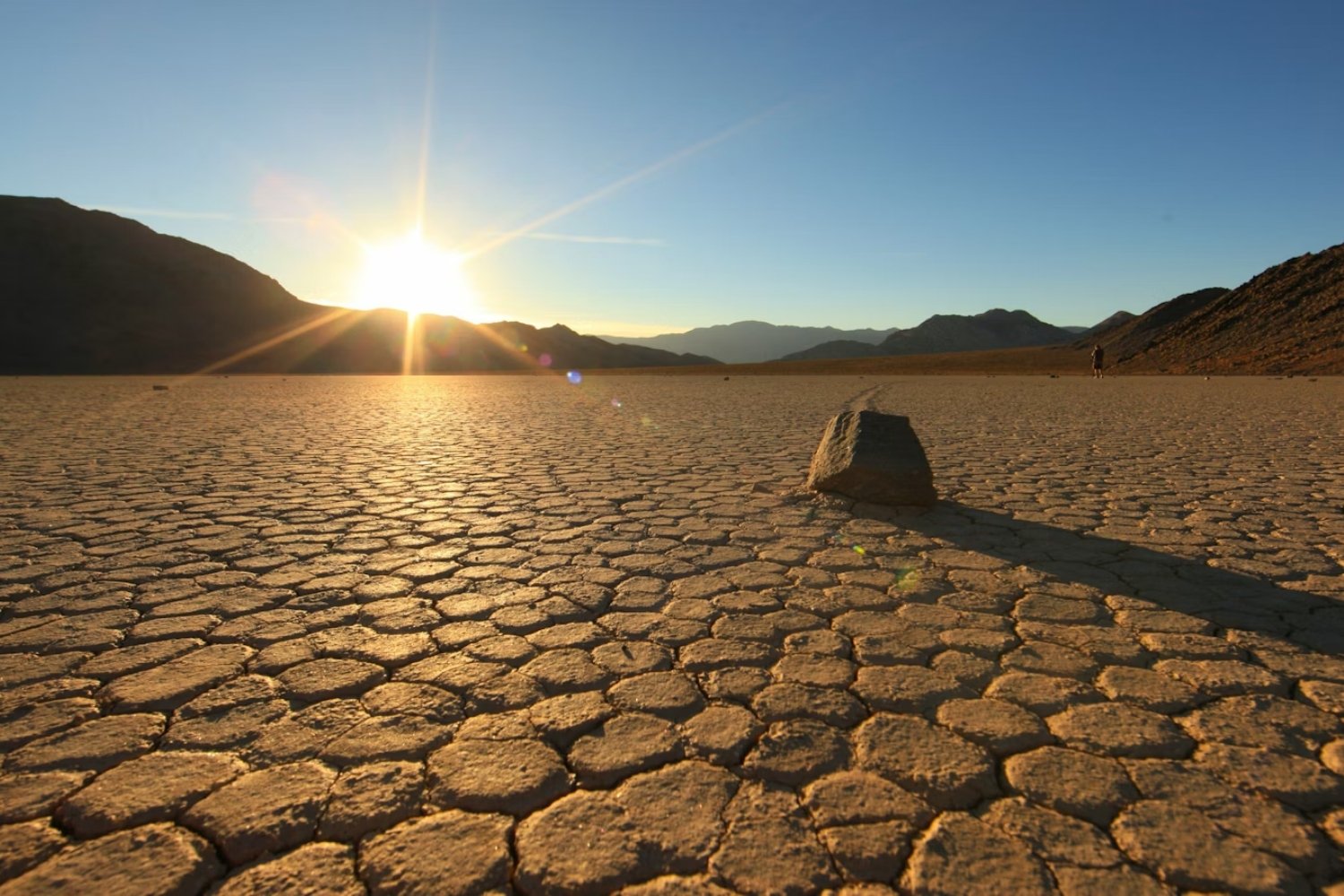Secrets Of California’s Death Valley Plateaus

Have you ever wondered what makes Death Valley so unique? This vast desert in California is home to some of the most stunning plateaus you'll ever see. These high, flat areas offer breathtaking views and a sense of isolation that's hard to find elsewhere. Imagine standing on a plateau, looking out over miles of rugged terrain, with the sun setting in the distance. It's a place where you can truly feel the power and beauty of nature. Whether you're an avid hiker or just someone who loves to explore new places, the plateaus of Death Valley are a must-see.
Secrets of California's Death Valley Plateaus
Death Valley, known for its extreme heat and arid landscape, hides some of the most fascinating plateaus. These elevated areas offer unique views, geological wonders, and a sense of isolation that is hard to find elsewhere. Let's uncover some of these hidden gems.
Mesquite Flat Sand Dunes
The Mesquite Flat Sand Dunes are a must-see. These dunes are easily accessible and provide a stunning contrast to the rocky plateaus surrounding them.
- Mesquite Flat Sand Dunes: Located near Stovepipe Wells, these dunes are perfect for sunrise or sunset photography. The shifting sands create ever-changing patterns, making each visit unique.
Dante's View
Dante's View offers a panoramic vista that will leave you breathless. This viewpoint is perched high above the valley floor, providing a bird's-eye view of the entire area.
- Dante's View: At an elevation of 5,475 feet, this spot offers a sweeping view of Death Valley. On a clear day, you can see both the highest and lowest points in the contiguous United States.
Zabriskie Point
Zabriskie Point is famous for its otherworldly landscape. The eroded badlands create a surreal environment that looks like something from another planet.
- Zabriskie Point: Known for its dramatic sunrise views, this point offers a stunning overlook of the badlands. The colors and textures of the landscape change with the light, making it a photographer's dream.
Telescope Peak
Telescope Peak is the highest point in the Panamint Range. The hike to the summit is challenging but rewarding, offering unparalleled views of the valley below.
- Telescope Peak: Standing at 11,043 feet, this peak provides a 360-degree view of Death Valley and beyond. The trail to the top is about 14 miles round trip, making it a great adventure for experienced hikers.
Artist's Palette
Artist's Palette is a vibrant display of colors caused by the oxidation of different metals in the soil. This natural art installation is a feast for the eyes.
- Artist's Palette: Located along Artist's Drive, this area showcases a rainbow of colors on the hillsides. The best time to visit is late afternoon when the colors are most vivid.
Ubehebe Crater
Ubehebe Crater is a massive volcanic crater that offers a glimpse into the geological history of Death Valley. The hike around the rim provides stunning views into the crater and the surrounding landscape.
- Ubehebe Crater: This 600-foot-deep crater was formed by a volcanic explosion. The trail around the rim is about 1.5 miles and offers spectacular views of the crater and the desert beyond.
Badwater Basin
Badwater Basin is the lowest point in North America. The salt flats create a stark, white landscape that contrasts sharply with the surrounding mountains.
- Badwater Basin: At 282 feet below sea level, this basin is a unique and eerie landscape. The vast salt flats stretch as far as the eye can see, creating a surreal environment.
Golden Canyon
Golden Canyon offers a hike through colorful rock formations and narrow canyons. The trail leads to the Red Cathedral, a stunning rock formation that glows in the sunlight.
- Golden Canyon: This 2-mile trail takes you through a maze of golden-hued rocks. The hike is relatively easy and offers plenty of opportunities for exploration and photography.
Racetrack Playa
Racetrack Playa is famous for its mysterious moving rocks. These rocks leave long trails behind them, creating a puzzle that has fascinated scientists for years.
- Racetrack Playa: Located in a remote part of the park, this dry lake bed is home to the famous "sailing stones." The best time to visit is during the cooler months, as the area can be extremely hot in summer.
Mosaic Canyon
Mosaic Canyon is known for its smooth, polished walls and narrow passages. The hike through the canyon offers a close-up look at the unique geological formations.
- Mosaic Canyon: This 4-mile round-trip hike takes you through a narrow canyon with walls made of smooth marble and mosaic-like rock formations. The canyon narrows to just a few feet in some places, creating a sense of adventure and discovery.
Embracing the Mystique of Death Valley Plateaus
Death Valley's plateaus offer a unique blend of natural beauty and mystery. These elevated landscapes provide stunning views, diverse wildlife, and a sense of solitude that's hard to find elsewhere. Exploring these plateaus means encountering unique rock formations, ancient petroglyphs, and a variety of plant life adapted to harsh conditions.
Visiting during cooler months ensures a more comfortable experience. Always bring plenty of water, sun protection, and a map. Respect the fragile ecosystem by staying on designated trails and leaving no trace.
Whether you're an avid hiker, a nature lover, or someone seeking peace, Death Valley's plateaus have something special. They remind us of nature's resilience and beauty. Plan your trip, pack wisely, and get ready to be amazed by one of California's most intriguing landscapes.

